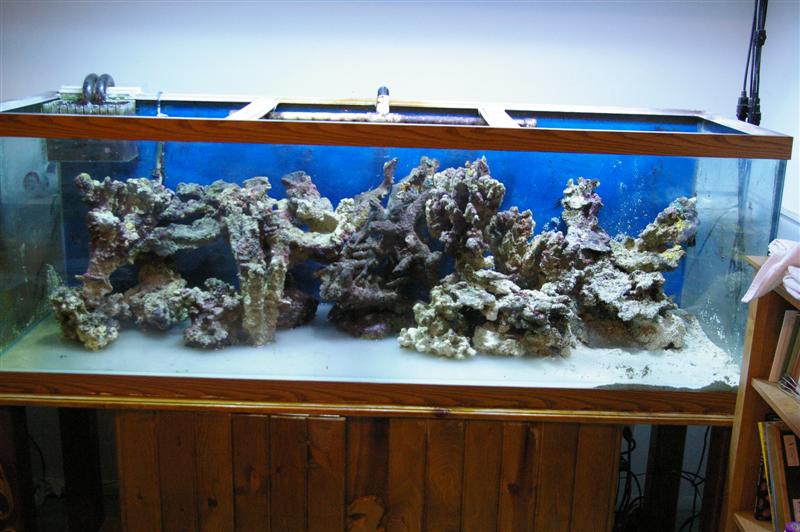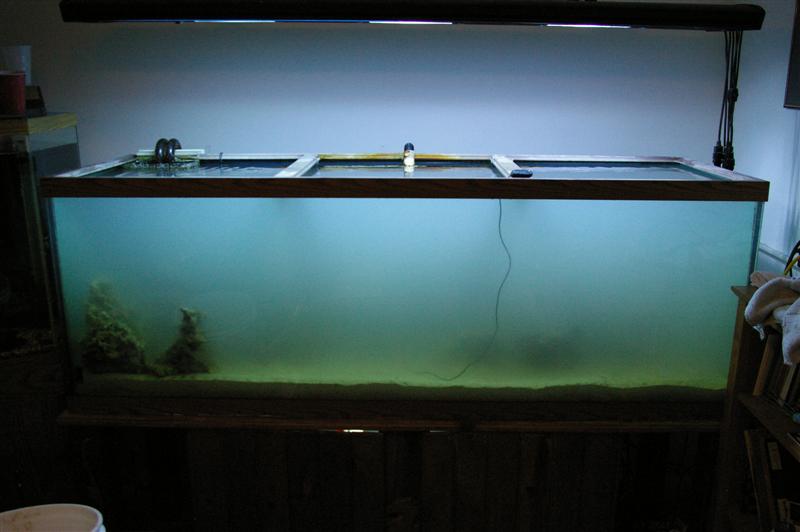Now that the rock and fish were out I siphoned out the remaining few inches of water getting as much as I possibly could.
I then scooped out the substrate using of all things a bread pan and put it in buckets. I ended up with 4 extremely full 5 gallon buckets. My thought was to keep 1 bucket as it was, (This bucket I filled with substrate scraped off the top of the sandbed,) to use to seed the cleaned substrate and the new substrate. As I began cleaning the substrate a few pounds at a time I found that there was a LOT of quartz rock in it. Then I remembered that when I originally moved the tank to my home from it's previous owners home I noticed the same thing. Since at the time I had neither the money nor the time to do anything about it I simply put it back in the tank.
This time though I wanted to get that quartz out and replace it with all good stuff. Since everything seemed to be doing well in the tanks there were in I headed out to the LFS to find some more new substrate. After stopping at 3 stores I had found enough to do the job. 4 more 40 lb bags of Seafloor Special Grade Reef Sand.
As I got this home I read on the bag that it is suggested that you rinse this new substrate until it runs cloudy rather than milky. I did so a few lbs at a time and found that it was a very good idea to do so. The water came out looking like strawberry milk, it was so thick with dust. After about 2 hours of rinsing sand I was ready to rebuild the tank.
I started by cleaning all of the glass, some of which has not been cleaned since I set it up 8 years ago. Then I pulled all of the new rock out of the holding bucket and spread it out on a tarp in the garage so I could get a good look at it and see what I had to work with. I then took it piece by piece to the tank and started working on the rockwork. I wanted the rock to sit on the bottom of the tank so there would be no issue of it shifting as things burrowed under the sand.
Here is what I ended up with.




I then added most of the new substrate and followed that with about half a gallon of the old, uncleaned substrate to seed it and covered over the top with additional new substrate. As I added the substrate I made sure it was worked around the back of the rock and filled under it as well as possible.
As soon as that was done I started refilling the tank with water so the rock didn't have to sit out too long and dry out. (I also kept it wet during the building process by splashing it with water throughout. That is why you see some water in the bottom of the tank in the pics.) I turns out I did not have as much water as I thought I had and I had to use water from just about every source I had. Luckily I had kept quite a bit and was able to completely fill the tank and still have enough left over to continue housing the corals, fish and rock. The old rock from my tank went into the bucket the new rock had been kept in so I was able to use that in between holding water as well.
Needless to say, by this time the tank looked like it was filled with milk.
